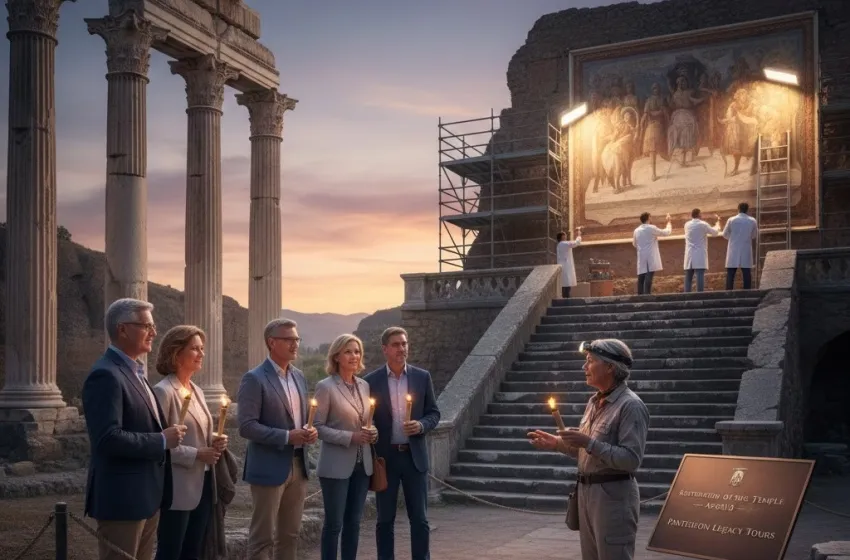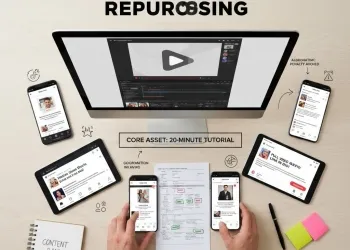Discover high-cost travel experiences providing cultural site funding for research and maintenance.
The world's historical and cultural site funding needs are immense, yet the resources available for historical conservation often fall tragically short. From the crumbling majesty of ancient Roman villas to the delicate frescoes of forgotten temples, our shared human legacy is under constant threat from time, climate, and the sheer volume of visitors. The tourism industry, which relies heavily on the draw of these invaluable landmarks, has a moral and economic imperative to transition from mere exploitation to active, financial stewardship. This transition defines the new movement of Heritage preservation tourism, where the economic power of travel is directly channeled into the long-term survival of the very sites travelers journey across continents to see.
This comprehensive content explores the critical necessity of investing tourism revenue back into conservation, detailing the innovative models of high-cost, exclusive travel that are forging a direct link between the tourist dollar and the archaeologist's trowel.
The Dual Nature of Tourism at Ancient Sites
Tourism is a powerful double-edged sword for heritage. On one side, it provides a crucial economic lifeline. The fees, taxes, and surrounding commercial activity generated by millions of visitors represent a vast potential revenue stream. Without this money, many sites would rapidly fall into disrepair, lacking the necessary funds for routine maintenance, security, and specialized conservation projects.
However, unchecked tourism presents an undeniable threat. The sheer physical presence of millions of feet can damage fragile surfaces; atmospheric changes from crowds of people accelerate decay in enclosed spaces; and the demand for infrastructure—hotels, roads, shops—can permanently alter the surrounding historical landscape. The challenge is finding the responsible travel to ancient sites equilibrium—the point where revenue generation optimally serves the mission of preservation without causing irreversible harm. The solution lies in shifting the economic model from volume-based, low-cost access to value-based, high-cost investment.
The Mechanism of Direct Investment Travel Experiences
A crucial development in Heritage preservation tourism is the emergence of specialized Travel experiences where a portion of the high cost directly funds the research and maintenance of historical and cultural landmarks. These are not your typical day trips; they are bespoke, premium offerings designed to appeal to high-net-worth individuals, philanthropists, and passionate cultural enthusiasts who want their travel to have a tangible, positive impact.
Exclusive Access to Ruins Programs
One of the most effective methods involves providing exclusive access to ruins and sites that are otherwise closed to the general public or are only accessible during restricted hours. This creates a compelling value proposition that justifies a significantly higher price point, with a guaranteed percentage of that fee earmarked directly for conservation.
- Behind-the-Scenes Archaeology: Imagine a week-long experience at a major Roman archaeological dig. Guests, paying a five-figure sum, are granted permission to observe active excavation, meet lead archaeologists, and attend private lectures in a newly discovered chamber. This is not passive viewing; it is participatory philanthropy. The funds generated cover the excavation team’s salaries, specialized equipment, and lab analysis.
- Sunset/Sunrise Photography Permits: Offering private, limited-group access to iconic landmarks like Angkor Wat or the Pyramids of Giza before or after official hours. The absence of crowds is the luxury, and the premium price covers the cost of night-time security, lighting maintenance, and site monitoring systems.
- Adopt-a-Site Sponsorships: High-end tours can be structured around a single monument, where the entire group's fee 'adopts' a specific piece of the site—say, the restoration of a fragile mural or the stabilization of a gateway arch. This allows travelers to feel a profound, personal connection to the preservation effort.
Transparency and Trust in Cultural Site Funding
For this model to be successful, cultural site funding from these high-cost tours must be managed with absolute transparency. Travelers paying a significant premium demand to know exactly how their money is being used. This necessitates:
- Direct Fund Allocation: Establishing a dedicated, ring-fenced fund for the historical site, ensuring the preservation portion of the tour cost is not absorbed into general governmental or organizational budgets.
- Detailed Reporting: Providing guests with quarterly or annual reports detailing the specific conservation outcomes achieved with their funds—e.g., "Your $10,000 contribution helped fund three months of work on the Temple of Zeus's frieze restoration."
- On-Site Proof: Incorporating meetings with conservation experts and researchers during the trip, allowing travelers to see the work in progress and hear first-hand about the impact of their investment.
The Imperative of Historical Conservation and Responsible Travel
The need for robust financial models for historical conservation is more urgent than ever. Climate change introduces new threats like increased flooding, extreme temperatures, and coastal erosion that damage fragile structures. Furthermore, the sheer increase in global travel, while providing an opportunity for funding, also magnifies the risk of physical degradation and cultural dilution.
The Challenge of Fragile Sites
Many ancient structures, particularly those made of porous stone, adobe, or wood, are not built to withstand the pressure of modern tourism. Responsible travel to ancient sites demands a rigorous understanding of the carrying capacity of each location. For instance, the caves of Lascaux, with their prehistoric paintings, had to be completely closed due to damage caused by the breath and humidity of visitors. The response was to build a replica, Lascaux II, demonstrating that preservation sometimes requires radical protective measures.
The high-cost, exclusive model addresses this directly by drastically limiting visitor numbers while maximizing financial return. A single group of ten paying $20,000 each can generate the equivalent revenue of tens of thousands of general admission tickets, all while minimizing the physical impact to a single, controlled visit. This strategy is the ultimate manifestation of responsible travel to ancient sites: less traffic, more funds.
Cultural Site Funding: Beyond the Ticket Price
While entrance fees contribute, they are rarely sufficient to cover the true costs of historical conservation. Specialized projects—such as the digital scanning of an entire city for an archival record, the development of climate control systems for fragile artifacts, or the specialized training of local conservators—require capital far beyond standard operating budgets.
Models for Scalable Investment
- Endowment Funds via Tourism: A portion of the high-cost tour revenue is used to build a long-term endowment for a specific site. This moves conservation funding away from reliance on annual visitor numbers, creating a buffer against geopolitical instability, pandemics, or natural disasters that halt tourism.
- Technology-Driven Preservation: Investment from premium tourism can fund cutting-edge technology. This includes 3D mapping for virtual reality experiences, which reduces the need for physical interaction with original structures, and advanced material science research to develop new, reversible conservation materials.
- Local Community Upskilling: Funds can be used for vocational training for local residents in specialized preservation trades—archaeological fieldwork, stone masonry, historical carpentry, and museum management. This ensures that preservation work is handled by skilled, local custodians, empowering the community and fostering a deeper sense of ownership over their heritage.
Exclusive Access to Ruins: The Value Proposition
The appeal of exclusive access to ruins is not just about avoiding crowds; it's about unparalleled enrichment. For the serious cultural traveler, the experience of having a world-renowned expert walk you through a site like Pompeii after the gates have closed, or being invited to a private dinner in the courtyard of a restored medieval castle, transcends standard luxury. The knowledge that this high-value experience directly sustains the very history they are witnessing is the ultimate reward, turning a vacation into a philanthropic investment.
Case Study: The Pantheon’s Private Patronage Experience
Imagine a hypothetical “Patron of the Pantheon” travel experience.
- The Offering: A four-day, three-night cultural immersion in Rome focusing solely on the Pantheon and its historical conservation.
- The Cost: $15,000 per person.
- The Exclusivity: The experience includes a private, pre-dawn visit to the Pantheon dome, where a lead architect explains the structural challenges of the 2,000-year-old concrete. Guests also receive a private viewing of unpublished archival drawings and a formal dinner hosted in the building's historical management offices.
- The Funding Mechanism: $5,000 of the cost is a non-taxable, direct donation to the Pantheon's façade restoration fund. The remaining $10,000 covers luxury accommodations, private transportation, expert guide fees, and operational costs.
- The Impact: This direct and substantial cultural site funding accelerates the timeline for crucial maintenance projects, while the low-impact, high-yield visit is the epitome of responsible travel to ancient sites.
Conclusion: The Future of Heritage Preservation Tourism
The future of our shared global heritage is inextricably linked to the economic models we choose to employ today. Heritage preservation tourism, driven by high-value, high-impact travel experiences, offers a sustainable and scalable path forward. It moves beyond the passive consumption of history to active, engaged stewardship. By formalizing the link between exclusive access to ruins and guaranteed cultural site funding for research and maintenance, the travel industry can finally fulfill its potential as a formidable force for good.
The traveler who chooses this path is not merely a sightseer; they are a patron, an investor, and a partner in historical conservation. They embody the highest ideal of responsible travel to ancient sites, ensuring that the majesty of the past endures not just for their generation, but for all those yet to come. The financial commitment is high, but the return on investment—the preservation of human civilization's most cherished treasures—is priceless.



































